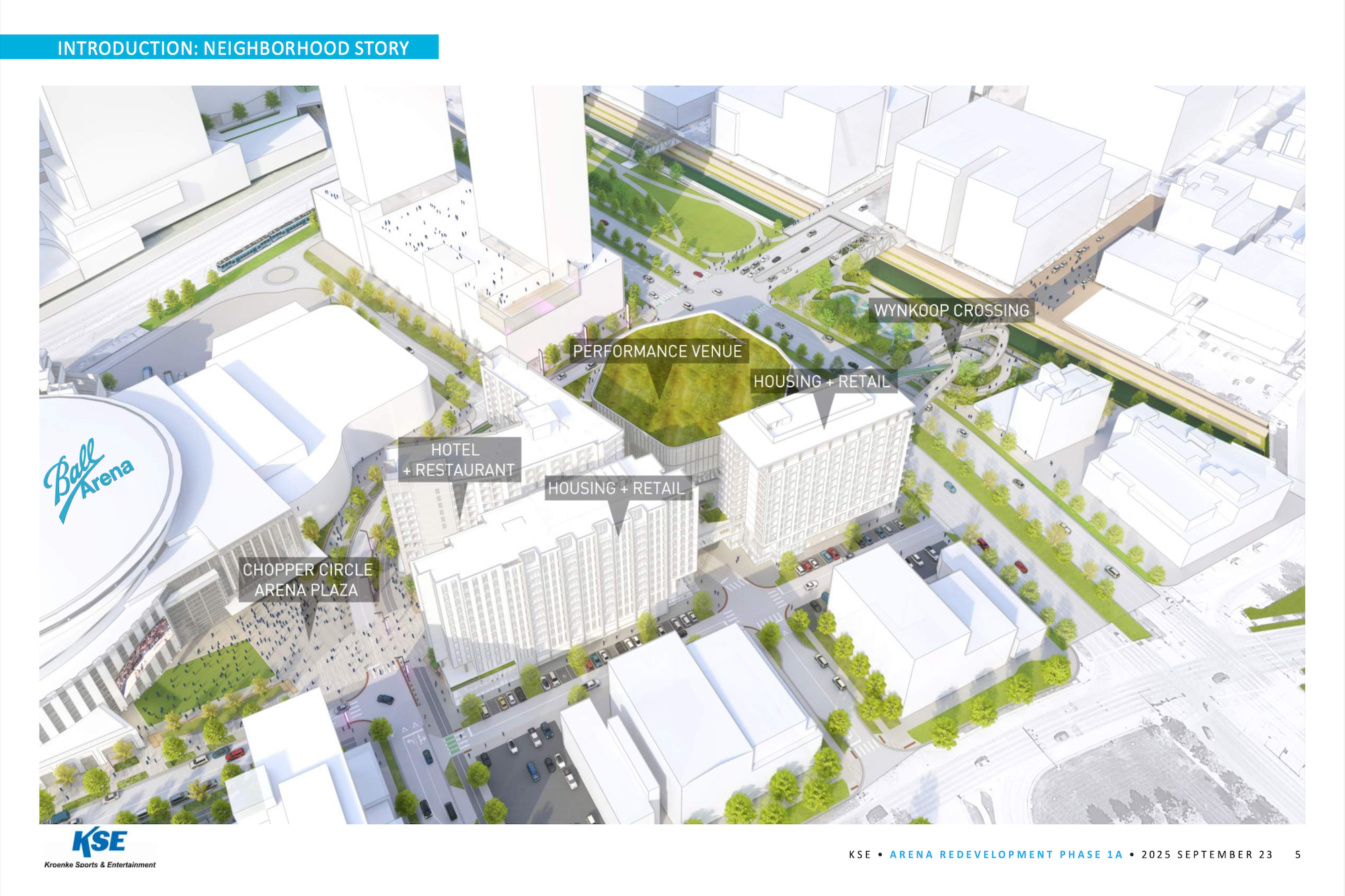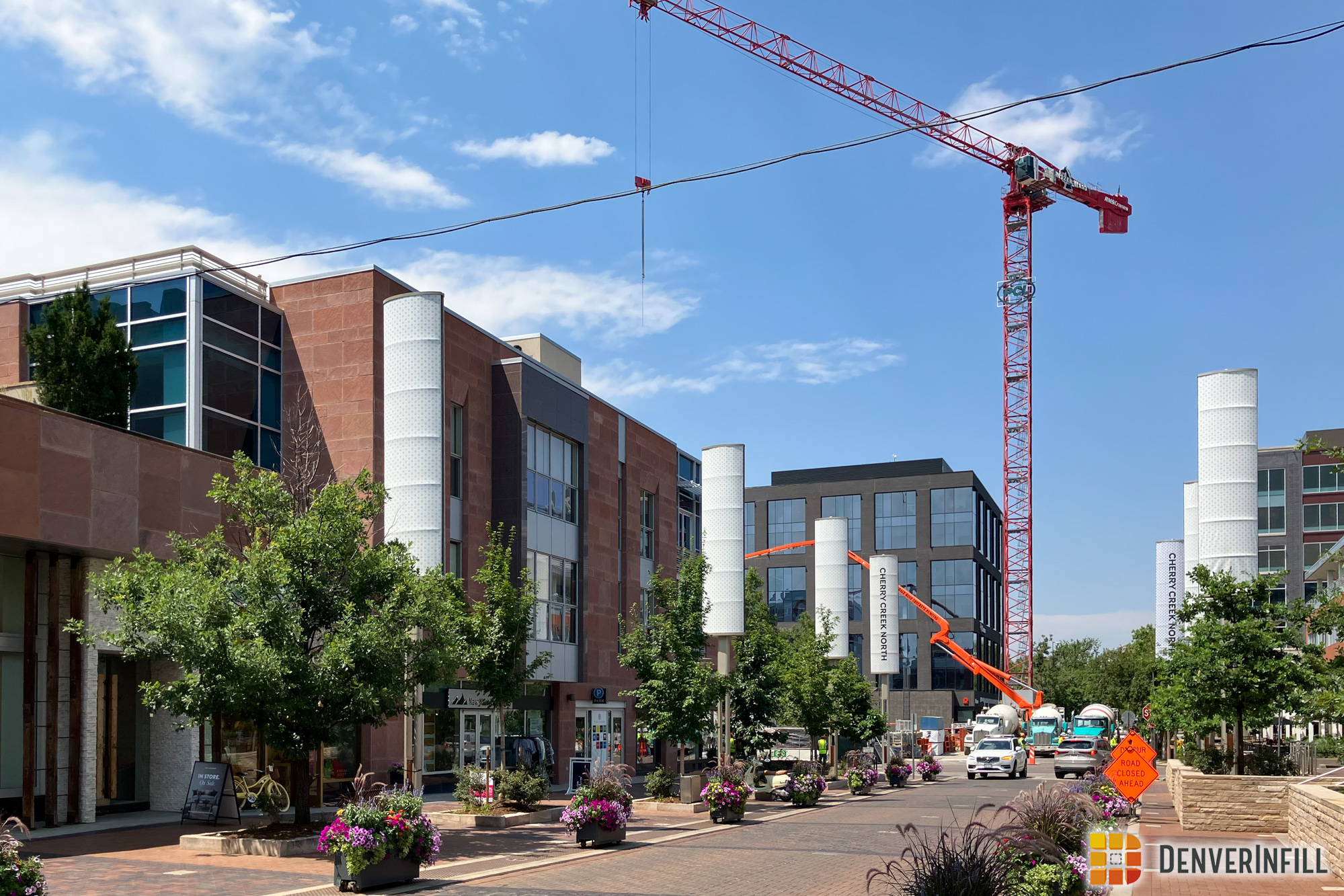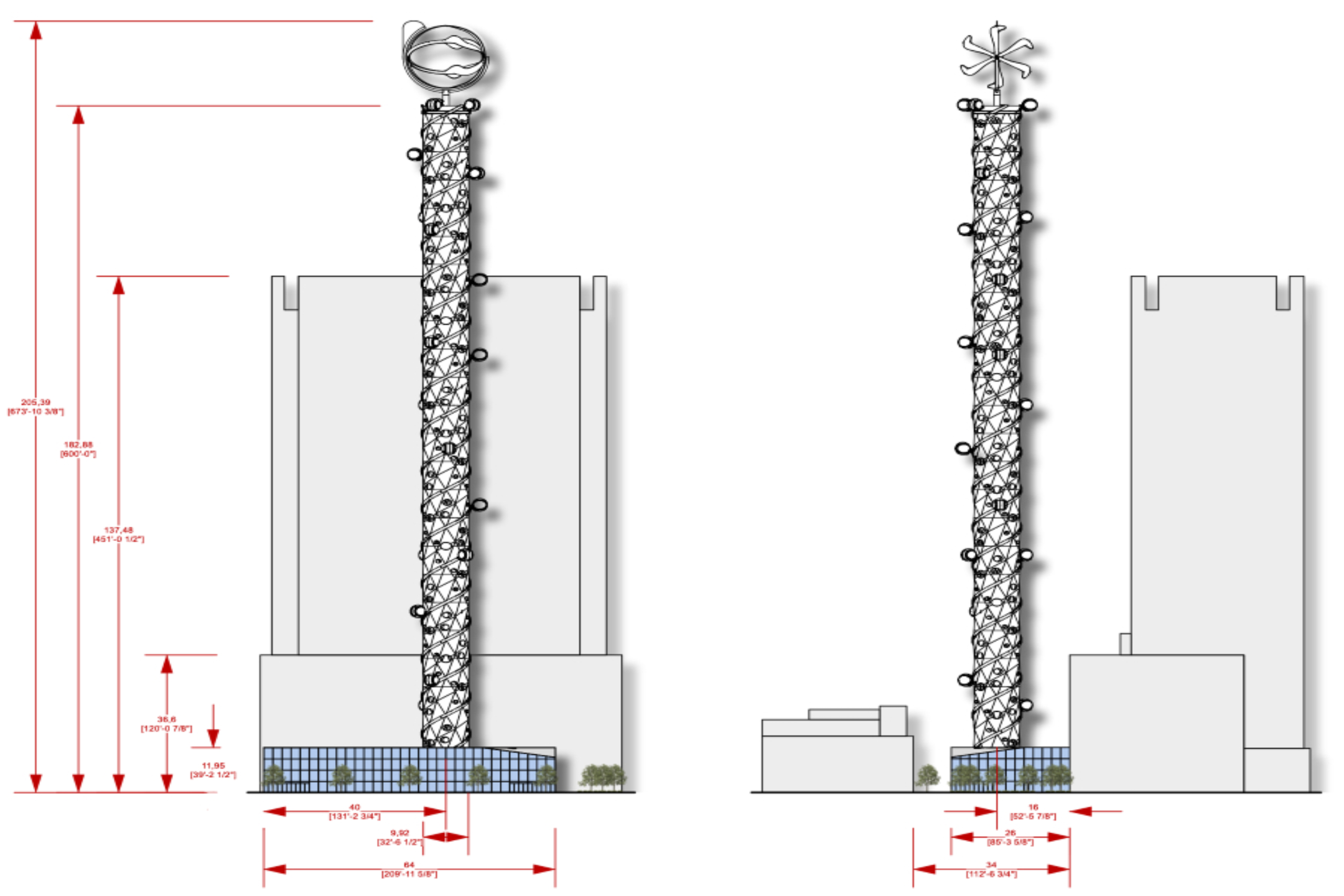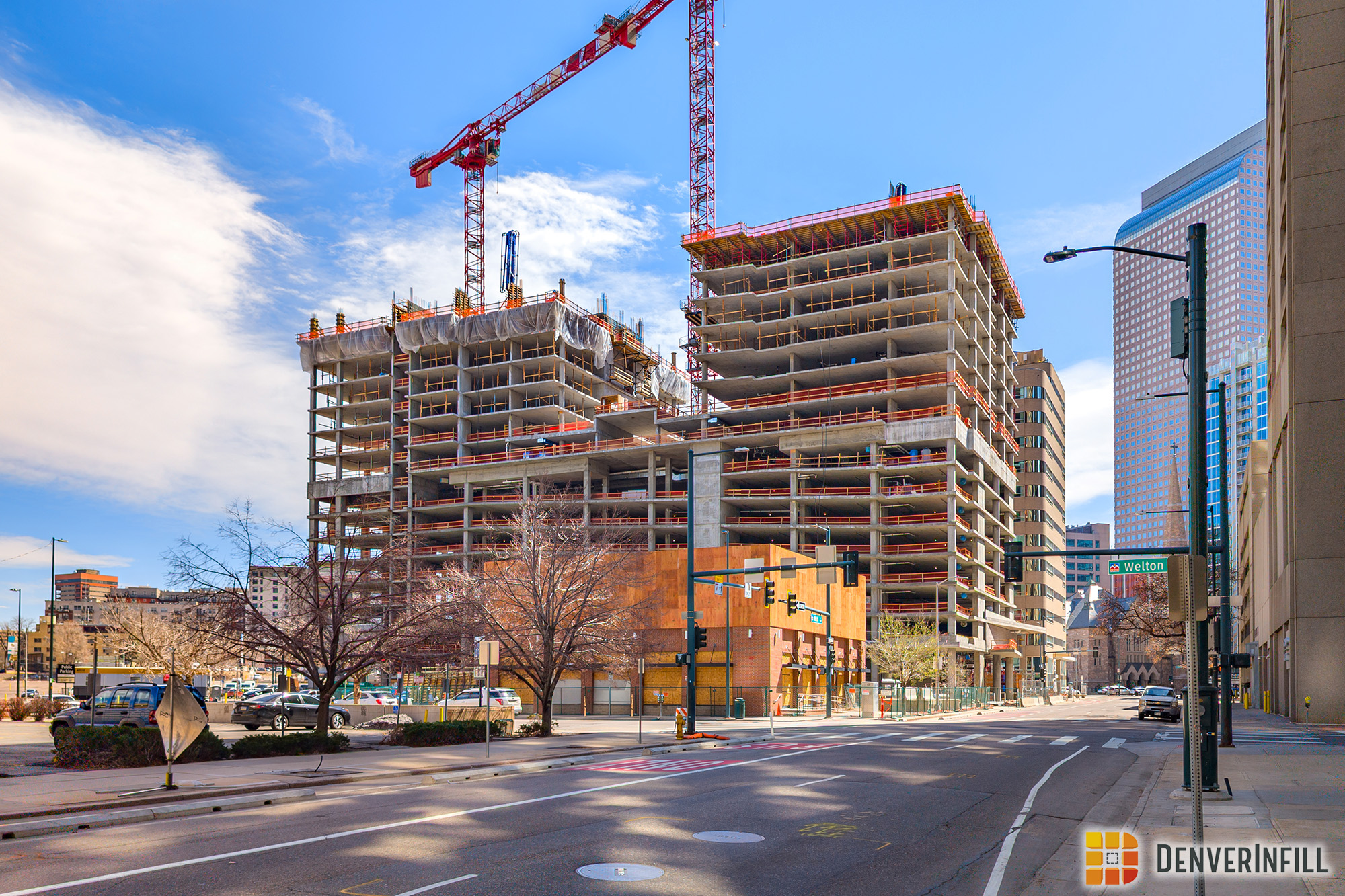Back in March, Derek did a post about the new office building in the TAXI development. Check it out for renderings of the project, as well as some great details.
The structure is pretty much complete. It’s just missing windows and the outer facade. The unique angles and design definitely give this project something that catches the eye.
With a quick little venture to the back side, you can start to see the facade going up. This is a neat building and it will be great how much natural light these offices will get given how big the windows are.
What a great development for the River North area. There is much more to come!















Counterpoint: A repeat-tomorrow list for Denver
It is human nature to be critical and cynical. Criticism is good because it forces us to judge the merits and outcomes of things. In architecture, planning, urbanism and city-building in general, it is necessary to promote and advance the cause for a higher standard for our community; fundamentally, it pushes us toward higher standards as a city. It is a particularly useful endeavor in design, architecture and development-related issues. And in Denver, a city known more as a developer’s town, it is needed more than ever.
Criticism, although useful, has limitations. When employed as a tool without offering alternative insights or pointing to other successes is shallow and unconstructive. Susan Barnes-Gelt’s: demolish-now list for Denver (Denver Post July 15, 2012) piece demonstrates this point. Out of respect for Ms. Barnes–Gelt, I offer a counterpoint to her piece with the hopes of reframing the discussion by offering some beacons of hope for the future of Denver.
The repeat-tomorrow list begins with the recently completed 14th Street improvement project. The project is the result of a partnership between the adjacent property owners, the Downtown Denver Partnership and the City. The narrowed street, new bicycle lanes and expanded sidewalk areas for pedestrians not only reestablished the prominence of the pedestrian but also demonstrate how strategic infrastructure investment stimulates redevelopment and urban connectedness. At $14 million dollars, the cost pales in comparison to a new civic building such as History Colorado Center which cost over $110 million, yet the return on investment comparison is staggering when you consider the amount of new development on the 12 blocks along 14th Street. A miniature version of this form of improvement is Tennyson Street in Highlands. The recently improved streetscape and business corridor resurrects and reinvents the business corridor from the old 1954 streetcar line.
Next we have Taxi, with artist-developer Mickey Zeppelin at the helm; it gets the anti-establishment, architectural and urban provocateur award. What more can be said of the eclectic creative clubhouse for hipster designers and businesses. Mickey, the Pied Piper of the Denver design culture, challenges the traditional role of the developer turning it into an art form by blending community activism and artistry with architecture to create a new form of social condenser in the transforming River North neighborhood. His refreshing inventions are challenging stale and formulaic development assumptions and providing a new model for contemporary city living.
In the small scale, big change category we have South Broadway, 17th Avenue and 13th Avenue. The small-scaled neighborhood infill results from organic, block-by-block, resurgence and incremental reinvestment that every city needs. As a counterpoint to the large-scaled top down developments such as Stapleton, this form of small-scaled growth is an essential indicator that the local forces for an emerging and sustainable neighborhood are alive and well.
And finally, the go big or go home award goes to the transformation of the Central Platte Valley. The groundbreaking transformation included twenty years of planning and cooperation, the removal of old infrastructure (the railroad was consolidated and viaducts removed) and a partnership between city and developer to deliver a new 20 acre park, three new pedestrian bridges and over 2,000 new residential units. Now, the grand finale is underway in the development of Denver Union Station, the central hub of the RTD FasTracks. The Valley demonstrates that strong political forces can have radical transformative impacts and set the stage for broader changes. Without the Valley, one has to question if urban living in areas like Lower Highlands or Ballpark would have ever succeeded.
On the heels of the Great Recession and with budget shortfalls and fiscal constraints at their height, it is easy for ominous “can’t do” attitudes to run rampant. Denver can proudly hold up a few achievements as models for the future of our thriving city.
Great job! I think this is one of the best looking buildings going up downtown. Why can’t they do something with this much interest and quality at Union Station or Central Platte Valley!? Keep up the good work and thanks for the update, I was wondering about this building the other day.
Drive will be featured on a ULI Colorado tour of TAXI, Denargo Market, and new Central Platte Valley projects on Thursday, August 23. We’ll meet at Taxi for a panel followed by a 2-mile B-Cycle tour of these sites and then back to Fuel Cafe for a reception. Featured speakers include Chris Achenbach, Chris Crosby, and out of town developers from companies like Windsor (Manhattan II) and Cypress (Denargo Market).
Questions the program will address include:
–What draws infill development to the South Platte corridor?
–Why has TAXI evolved as such a draw for creative businesses (400 jobs in 225,000 sf of commercial)?
–How can TAXI become better connected to RiNO and downtown?
–What attracts out-of-town apartment developers to Denver?
–Will downtown get a supermarket (RIP Deans)?
–Is there a place for families with children in the demographic mix?
–Does anyone swim in the shipping container pool?
Check it out at our web site.
ULI Colorado toured TAXI and Drive as part of an Aug. 23 program. We started off with a panel in the new BOA (high-tech shoelace designer/maker) space with views of downtown and Coors Field through second-story garage-door openings. Drive is a sleek black building with a forward prow that looks like it’s tilting toward downtown. The panel offered a contrast in developer styles. Kyle Zeppelin of Zeppelin Development said buildngs like DRIVE are meant to be flexible so they can evolve over long periods; rather than purpose-built and ready to be razed after 30 years. He talked about cutting down on overhead by using surface drainage instead of expensive engineering. The mystery is whether TAXI is a money maker. It certainly has been a success in terms of uses: 44 apartments all full and a half-million square feet of commercial space stuffed with architects, marketing companies and other “creative” types. We did not swim in TAXI’s shipping container pool but a couple of folks were out there and it was tempting on a steamy afternoon.
Chris Crosby of Nichols Partnership spoke very carefully about 20th and Chestnut. We hope it is sitll happening with grocery store intact. Chris commented, “Watch for our press release on this.” Otherwise he continues to be a tireless advocate for downtown living and lifestyles–smaller apartments, fewer cars, and more bicycles and transit. Chris said Nichols is working on several commercial projects that will rely heavily on bicycle transportation.
Ed Wendler of Texas-based Cypress Real Estate Advisors brought a more traditional real estate perspective. Cypress is currently building 313 apartments at Denargo Market; plans another 300 or so; and has committed perhaps $2.5 million to infrastructure improvements, inlcuding an 18-foot layer of fill on the semi-brown site that makes it look a bit like a Cahokia Mound overlooking the Platte. Wendler said that Cypress was drawn to Denver by the fundamentals of growth (especially the rising population of 25-to-34), but that the project would be about the same design, parking ratios, etc., no matter where it was built, urban or suburban.
On the B Cycle tour (bikes provided by James Waddell of B Cycle, thank you), about 75 participants clogged the South Platte path for a trip to Denargo Market and the 18th and Bassett light rail bridge. Dudley Simmons of Cypress talked about Denargo on site; Chris Achenbach of Zocalo discussed Cadence on the light rail bridge; the group toured the new Metropolitan Lofts; and Bill McCarthy of JE Dunne gave the construction ins-and-outs of the new Nichols project at 20th and Chestnut.